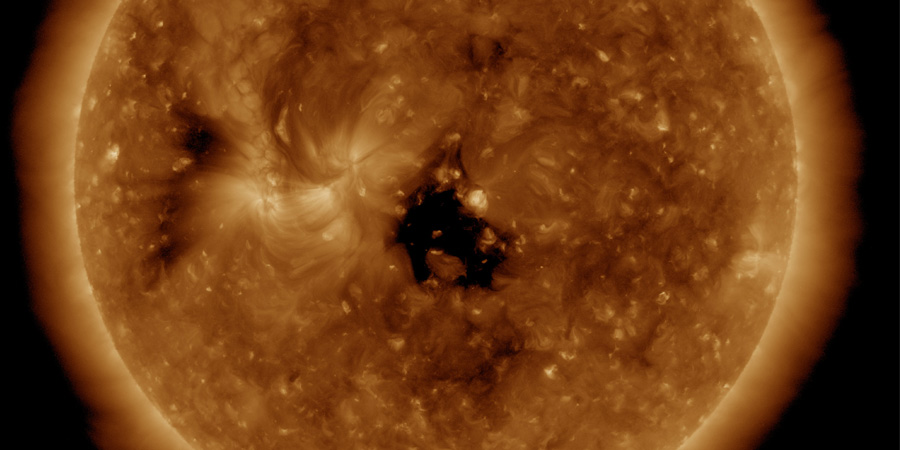Coronal hole faces Earth
Tuesday, 4 September 2018 15:46 UTC

After last month's impressive G3 geomagnetic storm caused by a coronal mass ejection, it is time to welcome back a familiar solar feature on our nearest star today. We have a small coronal hole facing our planet today.
This coronal hole existed during the previous rotation as well and caused one brief three hour period where active geomagnetic conditions were reached, a Kp of 4. Compared to the last rotation, this coronal hole has become slightly larger and well defined. It remains a fairly small coronal hole so its effects will likely be fairly modest but it is something interesting to keep an eye on for high latitude sky watchers. Our automated coronal hole detection system did its job and posted an alert on Twitter and our push alert service:
A southern hemisphere coronal hole is facing Earth. Enhanced solar wind could arrive in ~3 days. Follow live on https://t.co/bsXLidnzGh pic.twitter.com/vUfcxeRtvP
— SpaceWeatherLive (@_SpaceWeather_) September 4, 2018
The high speed solar wind stream flowing from this coronal hole will likely take about three days to arrive at Earth which means the solar wind stream should impact Earth somewhere this Friday, 7 September. Active geomagnetic conditions are likely which is great news for northern hemisphere high latitude sky watchers who finally enjoy proper dark nights again.
Thank you for reading this article! Did you have any trouble with the technical terms used in this article? Our help section is the place to be where you can find in-depth articles, a FAQ and a list with common abbreviations. Still puzzled? Just post on our forum where we will help you the best we can!
Latest news
Latest forum messages
Support SpaceWeatherLive.com!
A lot of people come to SpaceWeatherLive to follow the Solar activity or if there is a chance to see the aurora, but with more traffic comes higher costs to keep the servers online. If you like SpaceWeatherLive and want to support the project you can choose a subscription for an ad-free site or consider a donation. With your help we can keep SpaceWeatherLive online!
Space weather facts
| Last X-flare | 2025/12/08 | X1.1 |
| Last M-flare | 2025/12/31 | M7.11 |
| Last geomagnetic storm | 2026/01/02 | Kp5 (G1) |
| Spotless days | |
|---|---|
| Last spotless day | 2022/06/08 |
| Monthly mean Sunspot Number | |
|---|---|
| December 2025 | 124 +32.2 |
| January 2026 | 119.3 -4.8 |
| Last 30 days | 108.9 +1.7 |





